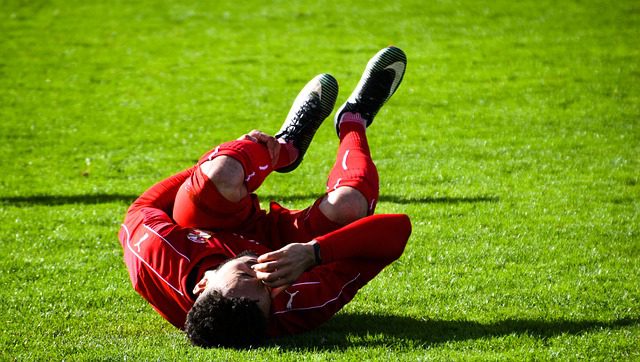Dealing With Common Sports-Related Injuries
Playing sports, especially those that require extensive coordination, body movements and teamwork is a great way to become physically fit and healthy while developing your interpersonal skills at the same time. Whether you do sports as a career, a recreational activity or a hobby, they certainly have a lot of health benefits. Unfortunately, these contact sports also come with risks — such as common sports-related injuries.
The National Health Statistics Reports published last November 2016 revealed that every year, an average of 8.6 million people suffer from sports-related injuries in the United States, with males and individuals between 5-24 years old accounting for over 50% of injury cases. Injuries to the lower extremities are the most common, accounting for 42% of cases, followed by injuries to the upper extremities at 30.3%. Head and neck injuries are the least common at 16.4%.
Disclaimer: This article is for informational purposes only and is not meant to treat or diagnose any condition. It is recommended that you speak with your doctor before starting any exercise program, changing your daily nutrition, or adding any supplements to your regimen.
Table of contents

Can You Prevent Sports-Related Injuries?
I am not a medical professional (nor do I pretend to be one), but I can offer some general tips that may help reduce the risk of sports-related injuries. However, it’s important to consult with a healthcare professional or a qualified sports medicine specialist for personalized advice. Here are some general suggestions:
- Warm-Up: Always warm up before engaging in any physical activity. This helps increase blood flow to the muscles and prepares the body for more intense exercise.
- Proper Technique: Ensure you use proper technique and form when participating in sports. Incorrect form can increase the risk of injuries.
- Gradual Progression: Gradually increase the intensity and duration of your workouts. Rapidly advancing your training can lead to overuse injuries.
- Cross-Training: Incorporate a variety of exercises into your routine to avoid overloading specific muscle groups or joints. This can help prevent overuse injuries.
- Rest and Recovery: Allow your body sufficient time to rest and recover between workouts. Adequate rest is crucial for preventing fatigue-related injuries.
- Strength Training: Include strength training exercises in your routine to build muscle strength and stability. Strong muscles provide better support to joints.
- Flexibility: Incorporate stretching exercises to improve flexibility. Flexible muscles are less prone to injuries.
- Proper Gear: Use appropriate sports equipment and ensure it fits correctly. This includes shoes, protective gear, and any other equipment relevant to your sport.
- Hydration: Stay hydrated before, during, and after physical activity. Dehydration can affect your performance and increase the risk of injuries.
- Listen to Your Body: Pay attention to any pain, discomfort, or signs of overexertion. If you experience persistent pain, it’s important to seek professional medical advice.
Remember, individual needs vary, and it’s crucial to tailor your approach based on your specific circumstances and fitness level. Always consult with a healthcare professional or a qualified trainer for advice tailored to your situation.
How Long Does It Take to Recover From Sports-Related Injuries?

The recovery time for sports-related injuries can vary widely depending on the type and severity of the injury, as well as individual factors such as age, overall health, and adherence to rehabilitation protocols. Here are some general guidelines for common sports-related injuries:
- Strains and Sprains:
- Mild strains or sprains may take a few days to a couple of weeks to heal with rest, ice, compression, and elevation (R.I.C.E).
- Moderate strains or sprains may take a few weeks to a couple of months, often requiring physical therapy.
- Severe strains or sprains may take several months to heal, and surgery may be necessary in some cases.
- Fractures:
- Minor fractures may take a few weeks to heal with immobilization (casting or bracing).
- More serious fractures may require surgical intervention and could take several weeks to months to heal completely.
- Tendon or Ligament Injuries:
- Minor injuries may take a few weeks to a couple of months with conservative treatment and rehabilitation.
- More severe injuries, such as torn ligaments or tendons, may require surgical intervention and an extended recovery period of several months.
- Concussions:
- Recovery from a concussion varies and is individualized. Some people may recover in a few days, while others may take weeks or even months.
- Rest and gradual return to activity are crucial in concussion recovery.
- Overuse Injuries:
- Recovery time for overuse injuries, such as stress fractures or tendinopathies, depends on the severity and the implementation of rest, rehabilitation, and modifications to activity.
- It can range from a few weeks to several months.
It’s important to note that these are general estimates, and each person’s recovery journey is unique. Adhering to medical advice, following prescribed rehabilitation programs, and avoiding premature return to sports or strenuous activities are critical for a successful recovery
Common Sports-Related Injuries

Below, let’s take a look at some of the most common sports-related injuries that many athletes face when trying to compete at the highest level.
1. Sprains
A sprain occurs when you twist your ligaments and are very common sports-related injuries. These ligaments connect bones together to form joints. When they get twisted, it can result in ligament stretching and tearing (partial or complete). Sprain injuries commonly affect the wrist and ankles. Injury to the ligaments will lead to signs and symptoms such as swelling, limited range of motion, pain, tenderness, and bruising.
2. Strains
If a sprain affects your ligaments, a strain involves your muscles and tendons. Your tendons connect bones and muscles together. When they are pulled or twisted, they might get stretched or torn, leading to a strain injury. The commonly strained muscles are the hamstring muscles at the back of your thighs and the muscles of your back. Strain injuries can be acute or chronic. The latter results from repeated trauma to the muscle. The signs and symptoms of strain include muscle spasms, pain, swelling, and inability to move the affected body part.
3. Fractures
Your bones are designed to be continuous and strong to support your body and facilitate movement. A break in your bone is called a fracture. There are several types of fracture but they are generally grouped into two categories. A closed fracture occurs when the fractured bone doesn’t puncture through the skin. In open fractures, the bone penetrates through the skin and becomes exposed. Approximately 20% of sports-related injuries are fracture injuries.
4. Superficial contusions
A contusion is more commonly known as a bruise. It is caused by a blunt trauma that didn’t break the skin, making the blood from the affected tissue seep out of the capillaries. That’s why you might observe that it looks black and blue (ecchymosis). A superficial contusion only involves the superficial tissues below the skin and doesn’t include the muscles; otherwise, it is a deep contusion. Superficial contusion comprises 19% of reported common sports-related injuries.
5. Open wound
An open wound is a break in the skin and the underlying tissues. There are different kinds of open wounds.
- Abrasion: An abrasion is a shallow, superficial wound that happens when the skin is rubbed against a rough surface, rubbing off some skin tissues.
- Laceration: A laceration is a cut or a tear in the skin and the tissues beneath it. The wound usually appears ragged or torn.
- Puncture: A puncture wound is caused by sharp, pointed objects that penetrated the skin, leaving a narrow but deep wound.
- Avulsion: An avulsion occurs when part of the tissue is forcibly torn away.

6. Traumatic brain injury (TBI)
While not one of the very common sports-related injuries, a traumatic brain injury happens when there is a trauma or injury to the brain caused by an external force. The force can be in the form of a jolt, a blow, a bump, or a penetrating injury to the head that causes a disruption in normal brain functions. TBI cases can range from mild to severe, depending on the mechanism that led to the injury.
7. Joint dislocation
Dislocation injuries happen when the ends of your bones slip out of their original position in a joint. These are caused by sudden trauma or sudden impact on the joints, forcing the end of the bones out of their position. The surrounding nerves, ligaments, and muscles can also be damaged. Your shoulder joints are the most commonly dislocated joints since they are flexible and have a wide range of motion, compromising their stability.
How to Deal With Common Sports-Related Injuries
- The first thing that you need to do is to keep your calm.
- If you suspect a fracture, a sprain, or a dislocation, do not move the affected body part.
- Apply the PRICE procedure when dealing with these type of injuries. Protect the injury from further harm, rest it, apply ice to prevent further swelling and alleviate pain, compress using an elastic bandage (splint it if it’s a fracture) in order to immobilize it, and elevate.
- Apply ice on superficial contusions.
- If there is an open wound, control the bleeding by applying direct pressure to the injury.
- Immediately call an ambulance if you suspect a TBI since the extent of TBI injuries is not externally visible.


*Disclosure: This article may contain affiliate links or ads, which means we earn a small commission at no extra cost to you if you make a purchase through these links. These commissions help support the operation and maintenance of our website, allowing us to continue producing free valuable content. Your support is genuinely appreciated, whether you choose to use our links or not. Thank you for being a part of our community and enjoying our content.
PLEASE CONSIDER SHARING THIS ON YOUR SOCIAL MEDIA TO HELP OTHERS LEARN MORE ABOUT THIS TOPIC.





